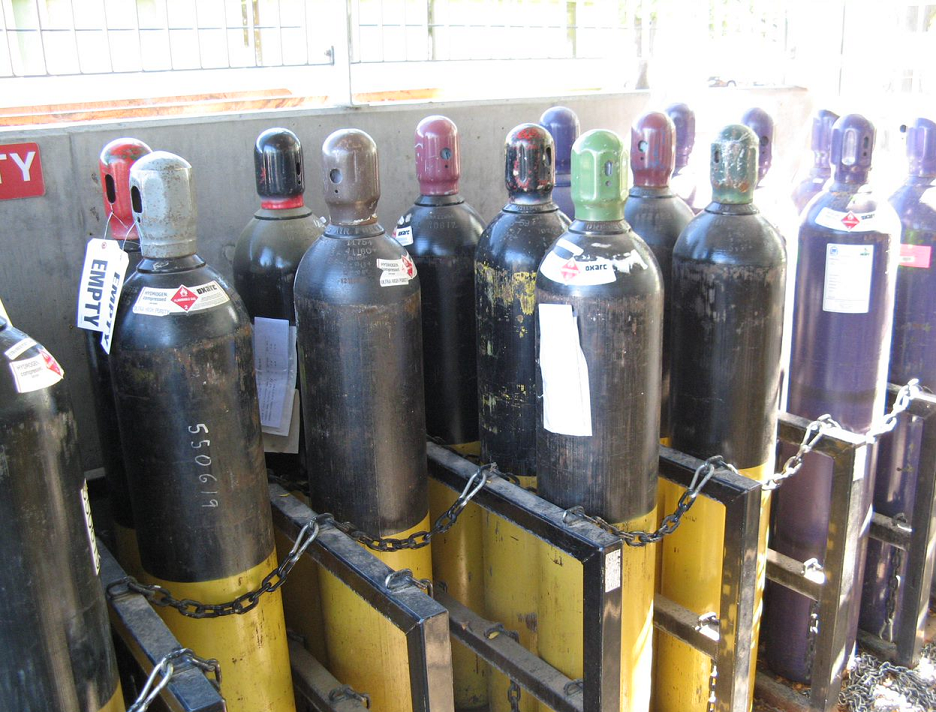Cylinder Storage
Small pressure vessels for storage and containment of hydrogen gas are sometimes referred to simply as cylinders or bottles. A typical gas cylinder is an elongated cylinder, standing upright on a flattened bottom end, with the valve and fitting at the top for connection.
Typically, the largest hydrogen cylinders are made of steel and are ~229mm x 1,524mm (9in x 5ft) and ~64kg (140lb).
Hydrogen cylinders have an outlet connection that is specific for flammable gas cylinders. In the United States, this is a CGA 350 connection with a left-handed thread. The safety pressure relief device on a hydrogen cylinder is a rupture disc with a fused outlet.
Cylinder ends are protected with a cylinder cap when not connected for use.
Proper locations for compressed gas cylinders include the following attributes:
- Well-ventilated
- Secure area protected from:
- Vehicular traffic
- Falling objects
- Direct sunlight where the ambient temperature can exceed 52°C (~126°F).
- Unauthorized access
- Becoming part of an electrical circuit
- Located away from:
- Heavily traveled areas
- Emergency exits
- Areas where corrosive materials present (e.g., salt)
- Combustible materials
- 3m (~10ft) away from combustible materials.
- 6m (~20ft) away from cylinders that contain corrosive, oxidizing, pyrophoric, or toxic fluids, and class 2, 3, or 4 unstable reactive chemicals. (NFPA 2 Hydrogen Technologies)
Transportable compressed gas cylinders should be secured in the upright position by chains or straps to prevent tipping.
Hand carts specifically designed for transporting cylinders should be used to move cylinders from one location to another and any cylinder being transported should be secured to the cart with a chain or strap.
Hydrogen Cylinder Hand Cart
Cylinders both in storage and at the point of use should be positioned to allow for safe access by the hand cart with no tripping hazards.
Cylinders should not be dropped, dragged, or rolled.
Cylinders should be clearly labeled to show their contents; and marked to show when they are empty.
Hydrogen Cylinders
(Pacific Northwest National Laboratory)



